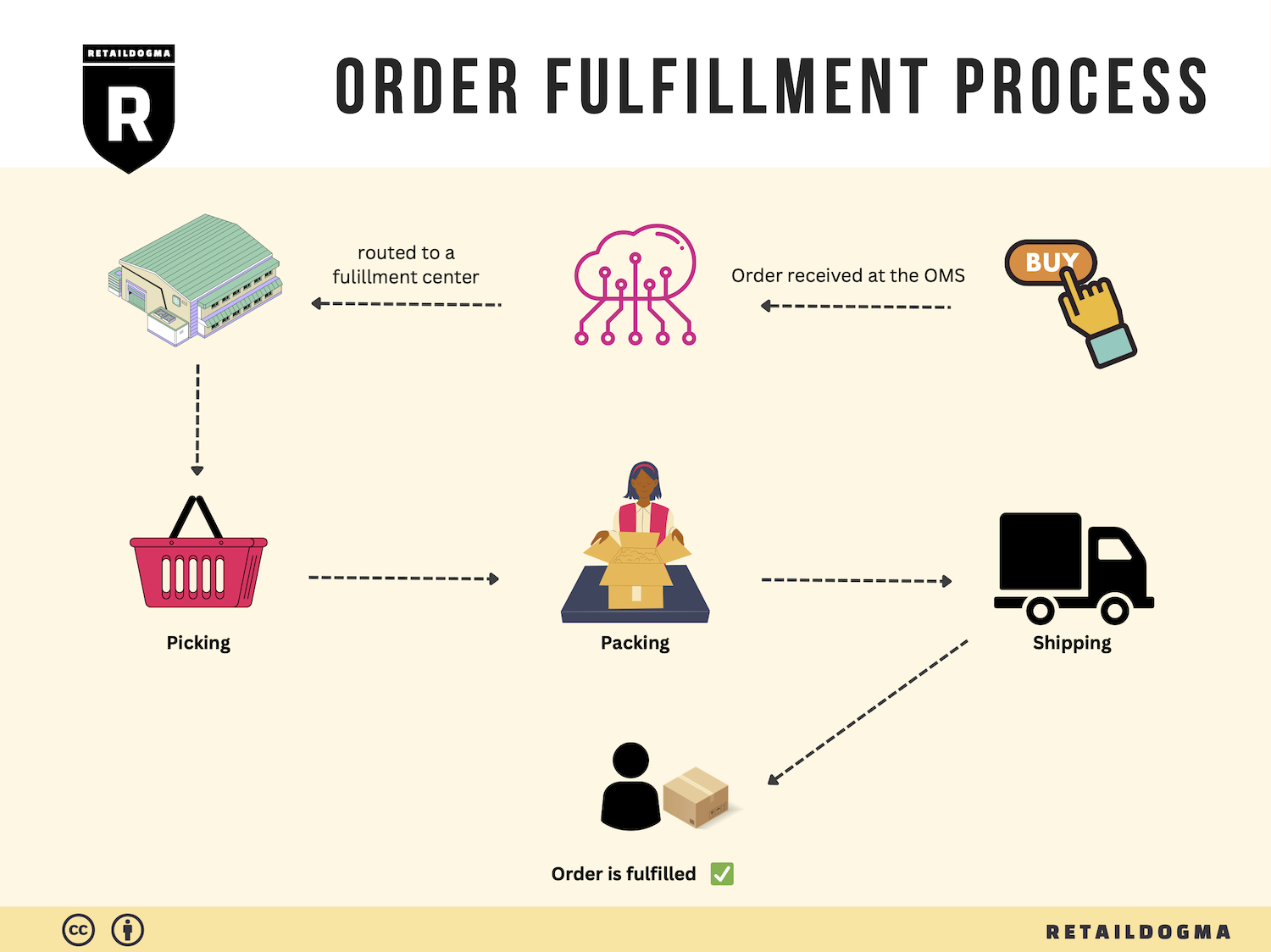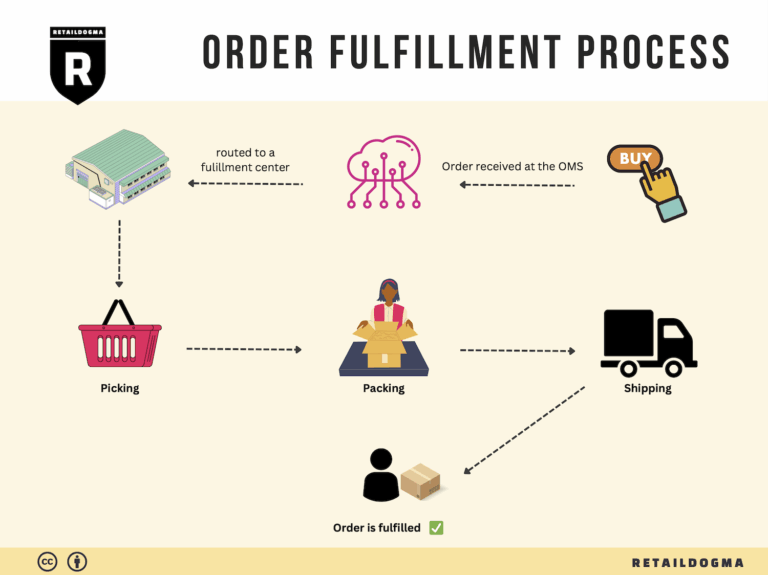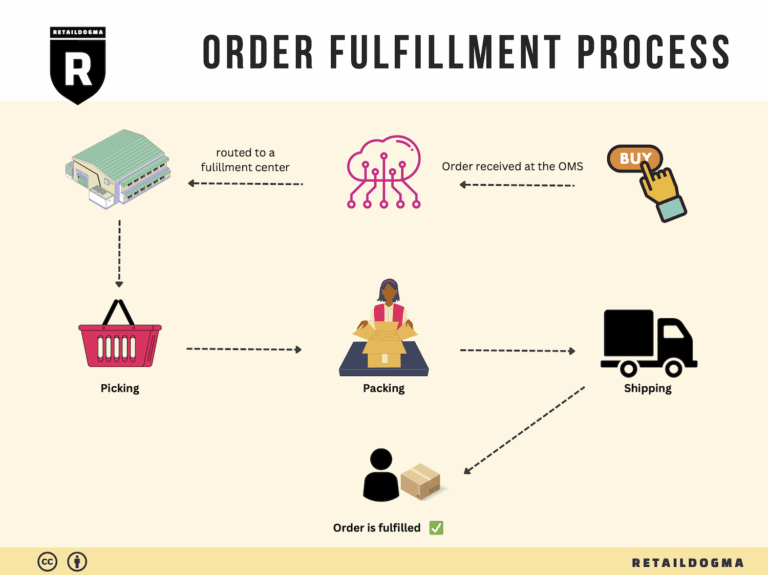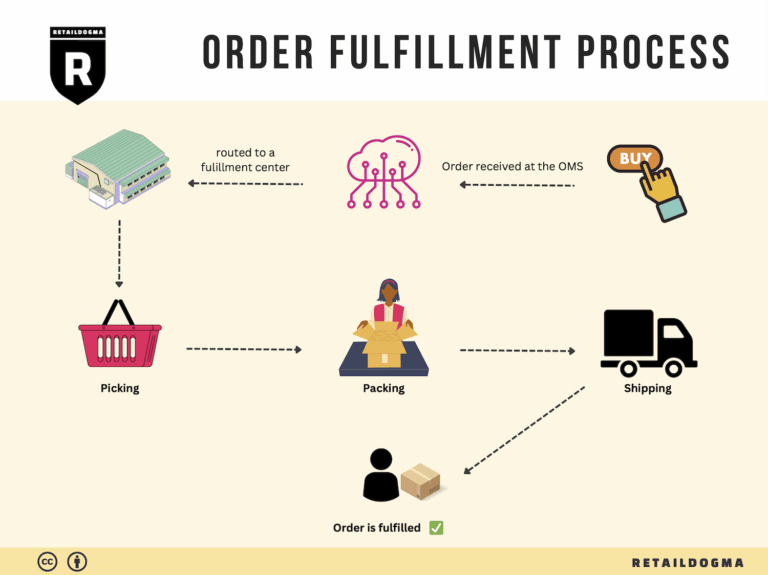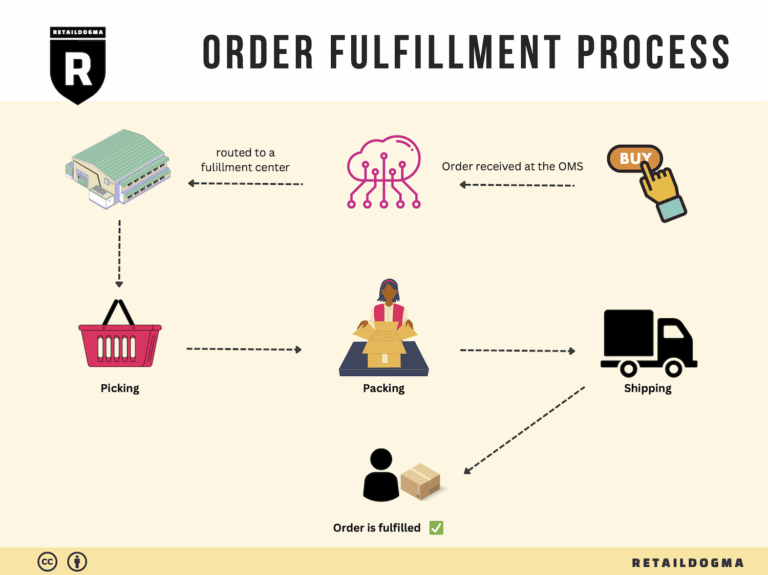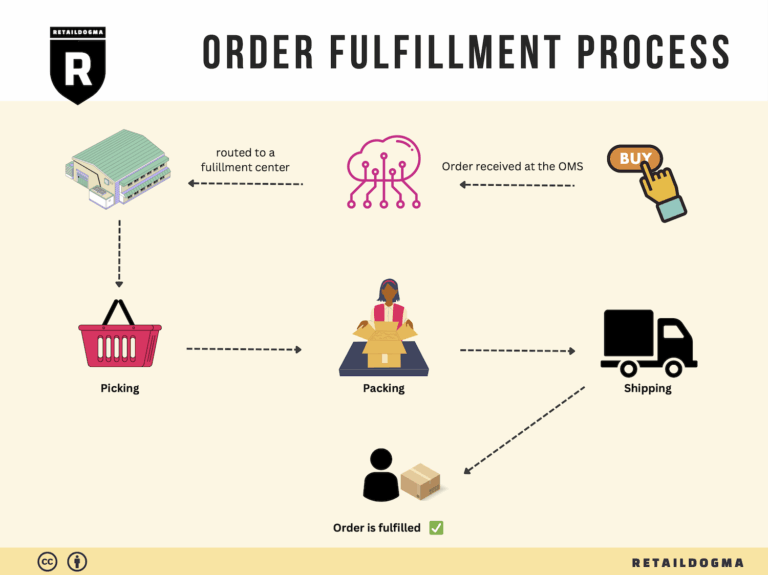What Is A Fulfillment Center? A Complete Guide (2025)
What is E-commerce Fulfillment? An Introduction for Growing Businesses
Running a growing online business often brings a whirlwind of responsibilities, and among the most daunting is the challenge of packing and shipping orders efficiently. As your sales increase, so does the complexity of fulfilling those orders, which can quickly become overwhelming. This is where understanding e-commerce fulfillment becomes essential. At its core, fulfillment is simply the process of getting a product from your warehouse or store to the customer’s doorstep. However, the nuances involved can significantly impact your customer satisfaction, operational efficiency, and ultimately, your bottom line.
This guide aims to demystify e-commerce fulfillment for business owners, operations managers, and entrepreneurs who are keen on scaling their sales and logistics. We’ll explore various fulfillment models, including Third-Party Logistics (3PL) and Fulfillment by Amazon (FBA), to help you determine which option aligns best with your business needs. Understanding these models will give you a clearer picture of how to streamline your fulfillment process and enhance your customer experience.
In addition to models, we will delve into the core services that make up the fulfillment process—such as order processing, inventory management, warehousing, packaging, and shipping. Each of these components plays a critical role in ensuring that your customers receive their orders on time and in excellent condition.
Choosing the right fulfillment partner is another critical aspect we will cover. With so many options available, knowing what to look for in a partner can save you time and resources while helping you avoid common pitfalls. We’ll discuss key criteria for selection, including technology capabilities, service levels, and pricing structures.
Finally, we will provide insights into pricing models for fulfillment services, helping you to understand how to budget for these essential operations without sacrificing quality or efficiency.
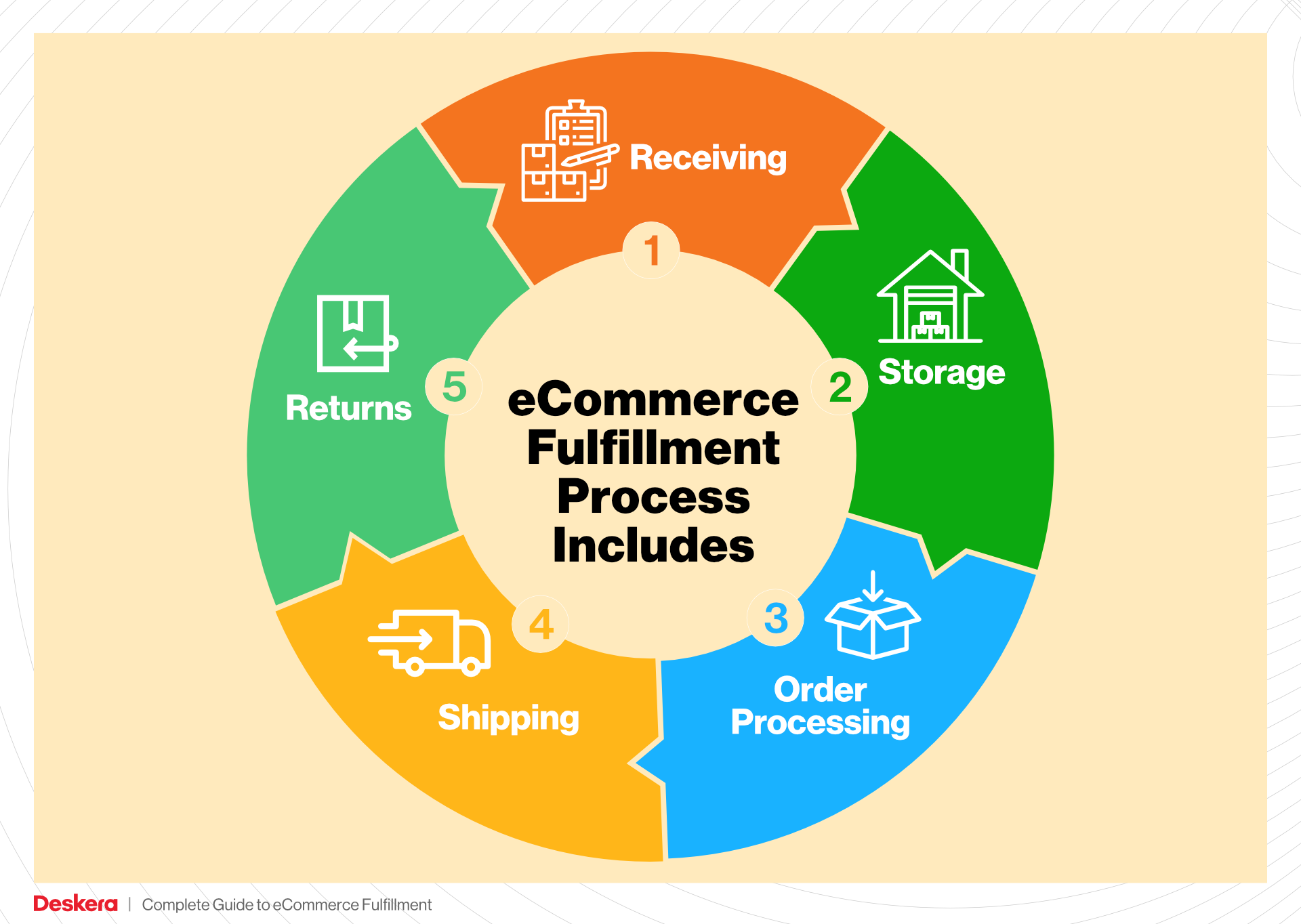
The goal of this guide is to empower you to make informed decisions about your logistics strategy. By the end, you’ll have a comprehensive understanding of e-commerce fulfillment that will enable your business to thrive in an increasingly competitive landscape.
What You’ll Learn In This Guide
- What is E-commerce Fulfillment? An Introduction for Growing Businesses
- The Order Fulfillment Process: From ‘Buy’ Button to Customer’s Door
- Comparing Fulfillment Models: In-House vs. 3PL vs. Dropshipping
- A Deep Dive into Amazon FBA: Pros, Cons, and Who It’s For
- Core Services Offered by Fulfillment Centers
- How to Choose a Fulfillment Partner: A 6-Point Checklist
- Understanding Fulfillment Pricing: A Breakdown of Common Fees
- Frequently Asked Questions (FAQs) about Fulfillment
- Conclusion: Is Outsourcing Fulfillment the Right Move for Your Business?
- Important Disclaimer
The Order Fulfillment Process: From ‘Buy’ Button to Customer’s Door
1. Receiving Inventory
The order fulfillment process begins with receiving inventory from suppliers. This step involves checking in products, verifying quantities, and ensuring that items meet quality standards. A key term associated with this stage is SKU (Stock Keeping Unit), which is a unique identifier for each product that aids in tracking and managing inventory.
This step is crucial because accurate receiving sets the foundation for the entire fulfillment process. Any discrepancies at this stage can lead to stockouts or overstock situations, which can disrupt order fulfillment and lead to customer dissatisfaction. By implementing robust receiving procedures, businesses can ensure that inventory records are accurate and that products are available for order processing.
2. Warehouse Storage
Once inventory has been received and verified, it moves to the storage phase within the warehouse. Effective organization and strategic placement of products are vital during this step. The key term here is bin location, which refers to the specific storage area designated for each SKU within the warehouse.
Proper warehouse storage is essential for optimizing space and ensuring efficient retrieval of products. A well-organized warehouse can significantly reduce the time it takes to locate items during the order picking process. Additionally, maintaining an organized storage system helps prevent damage and loss of inventory, contributing to overall operational efficiency.
3. Order Picking
When a customer places an order, the next step is order picking, where items are selected from their storage locations based on the order details. This process often utilizes a pick list, which is a document or digital display that outlines the items to be collected for each order, including their respective bin locations.
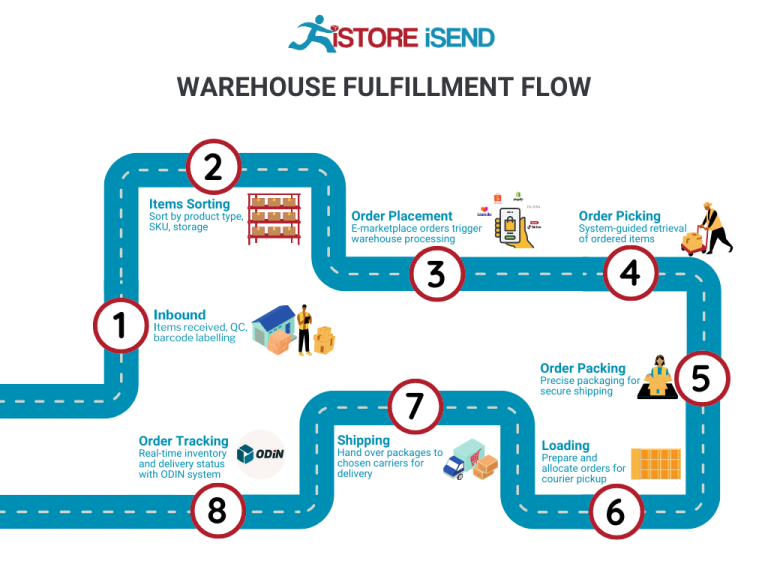
Order picking is a critical phase because it directly impacts the accuracy and speed of order fulfillment. Errors in this stage can lead to incorrect shipments, resulting in returns and customer dissatisfaction. To optimize order picking, businesses can employ various strategies, such as batch picking (collecting multiple orders simultaneously) or zone picking (assigning specific areas of the warehouse to different pickers). Streamlining this process can enhance productivity and reduce order turnaround times.
4. Order Packing
After items have been picked, they move on to the packing stage. This involves securely packing the products for shipment, ensuring they are protected during transit. The key term for this step is packing slips, which are documents included in the package that detail the contents of the order, including item descriptions and quantities.
Effective packing is vital for minimizing damage during shipping and ensuring that customers receive the correct items. Businesses should consider using appropriate packing materials that align with the type of products being shipped. Moreover, branded packaging can enhance the customer experience and reinforce brand identity. An efficient packing process can significantly reduce shipping costs and improve overall customer satisfaction.
5. Shipping & Delivery
The final step in the order fulfillment process is shipping and delivery. This stage involves selecting the appropriate shipping carrier, generating shipping labels, and dispatching the packages to the customer. A crucial aspect of this step is tracking, which allows customers to monitor their order status and delivery progress.
Shipping and delivery are critical components that can make or break the customer experience. Timely and reliable delivery enhances customer satisfaction and loyalty. Businesses should evaluate various shipping options to find the best balance between cost and speed. Additionally, providing customers with tracking information fosters transparency and trust, as they can stay informed about their order’s journey.
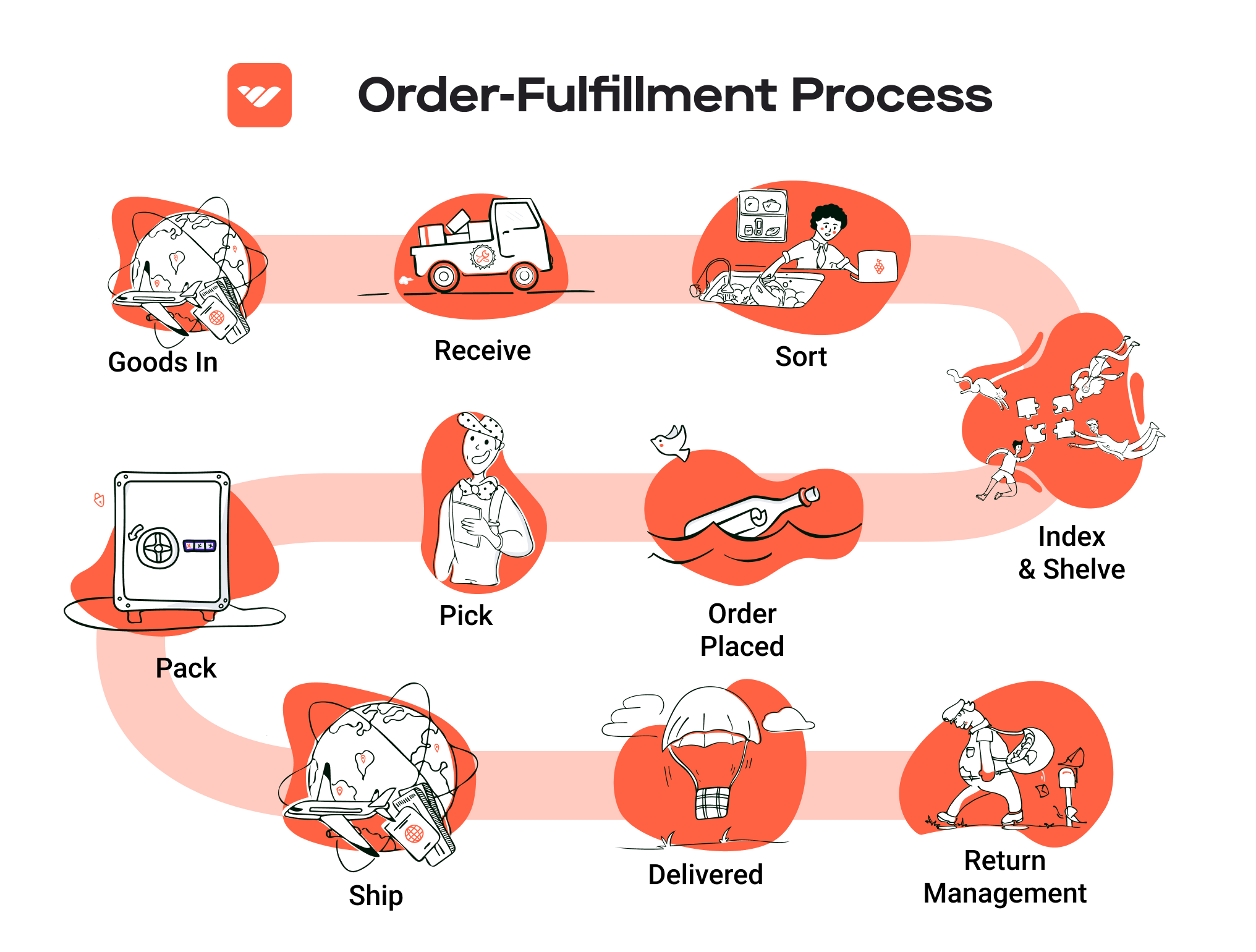
In summary, mastering each step of the order fulfillment process—from receiving inventory to ensuring timely delivery—is essential for e-commerce businesses looking to scale. By focusing on these key areas, businesses can enhance efficiency, improve customer satisfaction, and ultimately drive growth in their direct-to-consumer operations.
Comparing Fulfillment Models: In-House vs. 3PL vs. Dropshipping
Fulfillment Model Comparison
| Model | Who Handles Inventory | Best For (Business Stage) | Key Advantage | Key Disadvantage |
|---|---|---|---|---|
| In-House Fulfillment | The business itself | Established brands with scale | Full control over operations and branding | High overhead costs and resource-intensive |
| Third-Party Logistics (3PL) | The 3PL provider | Growing businesses | Cost-effective and scalable logistics | Less control over fulfillment processes |
| Dropshipping | Supplier | Startups and small businesses | Low startup costs and no inventory holding | Limited control over product quality and delivery |
In-House Fulfillment
In-house fulfillment refers to the process where a business manages its entire supply chain internally, from warehousing and inventory management to order processing and shipping. This model is ideal for established brands that have the resources and infrastructure to handle fulfillment at scale. The key advantage of in-house fulfillment is the complete control it offers over branding, customer experience, and operational processes. Businesses can tailor their packaging, shipping speed, and customer service to align with their brand’s identity and values. However, this model comes with significant drawbacks, particularly high overhead costs associated with staffing, warehousing, and technology investments. Additionally, the complexity of managing logistics can divert attention from core business activities, making it a resource-intensive option that may not be sustainable for all organizations.
Third-Party Logistics (3PL)
Third-party logistics (3PL) involves outsourcing fulfillment operations to a specialized provider that manages warehousing, inventory, order processing, and shipping on behalf of the business. This model is particularly beneficial for growing businesses that need to scale quickly without the burden of heavy infrastructure investments. By leveraging a 3PL, companies can access advanced logistics capabilities and technology, allowing them to optimize their supply chain without large upfront costs. The cost-effectiveness and scalability of 3PL services enable businesses to focus on their core competencies, such as product development and marketing. However, the downside is that businesses may relinquish some control over the fulfillment process, which can lead to potential inconsistencies in customer experience if the 3PL does not align perfectly with the brand’s standards. It’s crucial for businesses to choose a reliable 3PL partner to mitigate these risks and ensure operational efficiency.
Dropshipping
Dropshipping is a fulfillment model where the retailer does not keep products in stock but instead partners with suppliers who ship products directly to customers on the retailer’s behalf. This model is particularly appealing for startups and small businesses because it requires minimal initial investment and eliminates the need for inventory management and warehousing. The primary advantage of dropshipping is the low barrier to entry, allowing entrepreneurs to test products and markets without the financial risks associated with holding inventory. However, dropshipping has significant disadvantages, including limited control over product quality and delivery times. Since the retailer relies on third-party suppliers, any issues related to shipping delays or product defects can directly impact the customer experience. This lack of control can be detrimental to brand reputation, making it essential for businesses to conduct thorough research and partner with reliable suppliers.
Conclusion
When selecting a fulfillment model, e-commerce business owners must consider their unique needs, resources, and growth stage. In-house fulfillment offers complete control but can be resource-intensive, while 3PL providers offer scalable solutions that free up internal resources but require careful partner selection. Dropshipping provides a low-cost entry point but poses risks related to quality and delivery. By understanding the advantages and disadvantages of each model, businesses can make informed decisions that align with their operational goals and customer expectations.
A Deep Dive into Amazon FBA: Pros, Cons, and Who It’s For
Understanding Fulfillment by Amazon (FBA)
Fulfillment by Amazon (FBA) is a service offered by Amazon that allows businesses to store their products in Amazon’s fulfillment centers. Amazon then takes care of storage, packaging, and shipping of the products on behalf of the sellers. This service not only facilitates order fulfillment but also provides a range of additional benefits that can significantly impact an e-commerce business’s operations and reach.
When a customer places an order for a product fulfilled by Amazon, the order is processed by Amazon’s logistics network. This includes picking the item from the warehouse, packing it, and shipping it directly to the customer. Sellers using FBA can also benefit from Amazon’s customer service and returns handling, allowing them to focus more on their core business activities.
How FBA Works
-
Product Listing: Sellers create listings for their products on Amazon’s marketplace. These listings can be for new or existing products.
-
Inventory Shipment: Sellers ship their products to Amazon’s fulfillment centers. Amazon has multiple warehouses globally, enabling them to store products closer to customers, which can speed up delivery times.
-
Storage: Once received, Amazon stores the products in their warehouses until an order is placed.
-
Order Fulfillment: When a customer orders a product, Amazon picks, packs, and ships the item. Customers receive notifications and tracking information throughout the shipping process.
-
Customer Service: Amazon handles customer inquiries and returns, providing a seamless experience for both sellers and customers.
-
Payment: After the order is fulfilled, Amazon processes the payment, deducting any applicable fees before transferring the remaining balance to the seller.
Pros of Using FBA
-
Prime Eligibility: Products fulfilled by Amazon are eligible for Amazon Prime, which can significantly boost sales due to the vast number of Prime members who prefer fast, free shipping. This can lead to increased visibility and higher conversion rates.
-
Customer Trust: Leveraging Amazon’s established brand and reputation can instill trust in potential customers. Buyers are more likely to purchase from sellers who use FBA because they are assured of reliable shipping and customer service.
-
Multi-Channel Fulfillment: FBA isn’t limited to Amazon sales. Sellers can use FBA to fulfill orders from their own e-commerce sites or other marketplaces, allowing for streamlined logistics across multiple channels.
-
Scalability: FBA allows sellers to scale their business without the need for extensive warehousing and logistics management. Sellers can focus on marketing and product development while Amazon handles fulfillment.
-
Returns Handling: Amazon manages customer returns on behalf of sellers, which simplifies the process and can enhance customer satisfaction.
Cons of Using FBA
-
High Fees: While FBA can simplify fulfillment, it comes with various fees, including storage fees for inventory held in Amazon’s warehouses and fulfillment fees for each order processed. These costs can add up and eat into profit margins, especially for low-cost items.
-
Strict Inventory Rules: Amazon enforces strict inventory management rules, including limits on the amount of inventory sellers can store in their warehouses. This can be challenging for businesses that experience fluctuations in demand.
-
Commingling Risks: FBA uses a commingling inventory system, meaning that products from multiple sellers may be stored together. This can lead to issues if products are mixed up or if there are counterfeit items in the inventory, potentially affecting a seller’s reputation.
-
Loss of Control: By using FBA, sellers relinquish some control over the fulfillment process. This includes packaging and branding, which can impact how products are presented to customers.
-
Dependency on Amazon: Relying heavily on Amazon for fulfillment can create vulnerabilities. Changes in Amazon’s policies, fees, or algorithm can directly impact a seller’s business operations.
Who is FBA Best For?
Fulfillment by Amazon can be an excellent fit for various types of e-commerce businesses, particularly:
-
Startups and Small Businesses: FBA allows new sellers to enter the market without significant upfront investment in logistics and warehousing.
-
Brands with High Sales Volume: Businesses that anticipate high sales volumes can benefit from the efficiency of Amazon’s fulfillment network and the ability to reach a vast audience.
-
Sellers with Limited Resources: Companies lacking the infrastructure or expertise to manage logistics can leverage FBA to ensure reliable fulfillment without the need for extensive in-house operations.
-
Multi-Channel Sellers: Those looking to sell across various platforms can simplify logistics by using FBA for order fulfillment, helping to streamline operations while maintaining a presence on multiple sales channels.
In conclusion, Fulfillment by Amazon offers a powerful solution for e-commerce businesses looking to scale. While it provides numerous advantages such as increased visibility, customer trust, and streamlined logistics, it also comes with its share of challenges, particularly concerning fees and inventory management. Businesses must weigh these factors carefully to determine if FBA aligns with their growth strategy and operational capabilities.
Core Services Offered by Fulfillment Centers
Inventory Management & Warehousing
Inventory management and warehousing are foundational services provided by fulfillment centers that play a critical role in the success of e-commerce businesses. This service encompasses the systematic tracking of inventory levels, order fulfillment processes, and storage solutions for products before they reach customers.
What It Is:
Fulfillment centers utilize advanced inventory management systems to monitor stock levels in real-time. These systems enable businesses to understand what products are available, forecast demand, and manage reorders effectively. Warehousing involves storing products in organized spaces that facilitate easy access for picking and packing orders.
Benefits:
1. Real-time Visibility: With efficient inventory management, e-commerce businesses gain real-time insights into stock levels, which helps in making informed decisions about restocking and promotions.
2. Reduced Carrying Costs: By optimizing inventory levels, businesses can minimize costs associated with overstocking, such as storage fees and spoilage.
3. Streamlined Operations: Proper warehousing solutions lead to a more organized stock layout, reducing the time spent locating products and enhancing overall order processing speed.
Pick and Pack Services
Pick and pack services are essential for fulfilling customer orders accurately and efficiently. This service involves selecting the right products from inventory and preparing them for shipment.
What It Is:
In the pick and pack process, fulfillment center staff retrieve ordered items from the warehouse shelves, verify them against the order, and package them securely for delivery. This process may also include adding marketing materials or personalized notes to enhance customer experience.
Benefits:
1. Accuracy and Efficiency: Professional pick and pack services reduce the likelihood of errors in order fulfillment, ensuring that customers receive exactly what they ordered. This accuracy is crucial for maintaining customer satisfaction and loyalty.
2. Scalability: As e-commerce businesses grow, their order volumes can fluctuate significantly. Fulfillment centers can easily scale pick and pack operations up or down based on demand, allowing businesses to adapt without investing in additional resources.
3. Time Savings: Outsourcing pick and pack services allows e-commerce businesses to focus on core operations such as marketing and product development, while fulfillment centers handle the logistics of order preparation.
Kitting and Assembly
Kitting and assembly services offered by fulfillment centers can significantly enhance product offerings and streamline the fulfillment process for e-commerce businesses.
What It Is:
Kitting involves combining multiple individual items into a single package or kit, which can be sold as a bundled product. Assembly may include tasks such as putting together components or preparing products that require assembly before shipping.
Benefits:
1. Value Addition: Kitting allows businesses to create unique product offerings that can attract more customers. Bundled products often provide perceived value, encouraging higher sales.
2. Improved Inventory Management: By consolidating items into kits, businesses can reduce the complexity of inventory management, making it easier to track and fulfill orders.
3. Enhanced Customer Experience: By providing well-packaged kits or assembled products, e-commerce businesses can improve customer satisfaction. This attention to detail can lead to positive reviews and repeat purchases.
Returns Management (Reverse Logistics)
Returns management, or reverse logistics, is a vital service that fulfillment centers offer to handle product returns efficiently and effectively.
What It Is:
Returns management involves the processes associated with receiving returned products, inspecting them, restocking them if they are in sellable condition, and managing exchanges or refunds. This service also includes tracking the reasons for returns to identify potential product issues.
Benefits:
1. Customer Retention: An efficient returns process enhances customer satisfaction, as consumers are more likely to shop with businesses that offer easy returns. This is especially crucial in e-commerce, where customers cannot physically inspect products before purchase.
2. Data Insights: By analyzing return data, businesses can gain insights into product performance, customer preferences, and potential areas for improvement. This information can inform product development and marketing strategies.
3. Cost Management: Fulfillment centers can help streamline reverse logistics processes, reducing costs associated with returns and ensuring that products are either restocked quickly or disposed of responsibly.
In conclusion, partnering with a fulfillment center that offers these core services can provide e-commerce businesses with the infrastructure and expertise needed to scale operations effectively. By leveraging inventory management, pick and pack services, kitting, and returns management, businesses can enhance customer satisfaction, improve operational efficiency, and ultimately drive growth in a competitive marketplace.
How to Choose a Fulfillment Partner: A 6-Point Checklist
Location & Warehouse Network
Importance:
The geographical location of your fulfillment partner’s warehouses can significantly impact shipping times and costs. A strategically located warehouse network can help ensure that your products reach customers quickly and affordably, enhancing customer satisfaction and reducing shipping expenses.
Questions to Ask:
– Where are your warehouses located, and how do they align with our customer base?
– How do you handle shipping to different regions (domestic and international)?
– Can you provide insights into your average shipping times to various areas?
Technology & Integrations
Importance:
In today’s digital age, having a robust technological infrastructure is crucial for seamless order processing, inventory management, and real-time tracking. A fulfillment partner with advanced technology can integrate with your existing e-commerce platforms, providing visibility into inventory levels and order statuses.
Questions to Ask:
– What order management and inventory management systems do you use?
– Can your systems integrate with our e-commerce platform (e.g., Shopify, WooCommerce)?
– Do you provide real-time tracking for orders, and how is this communicated to customers?
Specializations (e.g., Cold Storage, Oversized Items)
Importance:
Different products have unique storage and handling requirements. If your business deals with perishable goods, oversized items, or fragile products, it’s essential to partner with a fulfillment provider that specializes in those areas to ensure the safety and quality of your products.
Questions to Ask:
– Do you have specialized facilities for specific product types (e.g., cold storage, hazardous materials)?
– What processes do you have in place to manage unique handling requirements?
– Can you provide case studies or examples of your experience with similar products?
Scalability & Capacity
Importance:
As your business grows, your fulfillment needs will evolve. A partner that can scale with you is crucial for accommodating increased order volumes, seasonal spikes, or new product launches without compromising service quality.
Questions to Ask:
– How do you handle peak seasons and fluctuations in order volume?
– What is your current capacity, and how quickly can you expand it if necessary?
– Do you have a plan in place for unexpected surges in demand?
Pricing and Contracts
Importance:
Understanding the pricing structure and contract terms is essential for budgeting and financial planning. Look for transparency in pricing and ensure there are no hidden fees that could impact your margins.
Questions to Ask:
– What is your pricing model (e.g., per order, per item, monthly fee)?
– Are there additional costs for services like storage, packaging, or returns?
– Can you provide a sample contract to review the terms and conditions?
Customer Support & Reviews
Importance:
Excellent customer support can make a significant difference in your relationship with a fulfillment partner. Responsive and knowledgeable support helps resolve issues quickly, ensuring a smooth operation. Additionally, reviewing feedback from other clients can provide insights into their reliability and service quality.
Questions to Ask:
– What customer support channels do you offer (e.g., phone, email, live chat)?
– How do you handle inquiries and issues, and what is your response time?
– Can you provide references or reviews from current or past clients?
Conclusion
Choosing the right fulfillment partner is a critical decision that can affect your business’s efficiency and customer satisfaction. By using this checklist, e-commerce business owners, operations managers, and entrepreneurs can systematically evaluate potential partners to find the best fit for their unique needs. Prioritize a partner that aligns with your business goals, offers transparency, and demonstrates the capability to scale alongside your growth. Taking the time to assess these factors will ultimately contribute to a smoother fulfillment process and enhance your customers’ overall experience.
Understanding Fulfillment Pricing: A Breakdown of Common Fees
Initial Setup Fees
Initial setup fees are one-time charges that cover the cost of establishing your account with a fulfillment provider. These fees typically include onboarding processes such as system integration, inventory setup, and training. The amount can vary significantly based on the complexity of your operations and the technology used by the fulfillment center.
For instance, if your business requires custom software integrations or specialized handling processes, you might incur higher fees. It is essential to clarify what is included in these fees—such as access to customer support, software tools, and initial inventory management setups—before signing any agreements.
Receiving Fees
Receiving fees are charged when your products are delivered to the fulfillment center. This fee covers the labor and resources required to unload, inspect, and store your inventory.
Typically calculated per pallet or per unit, receiving fees can vary based on the complexity of your products. For example, if your items require special handling or inspection before being stored, you might expect to pay a higher receiving fee. Understanding the receiving process is crucial, as some fulfillment centers may charge additional fees for discrepancies in shipment quantities or damaged goods.
Storage Fees (per pallet/bin)
Storage fees are recurring charges for the space your inventory occupies within the fulfillment center. These fees are often calculated on a monthly basis and can be assessed per pallet, bin, or even per square foot, depending on the provider’s pricing structure.
Factors influencing storage fees include the type of products being stored, the seasonality of your inventory, and the overall volume of your goods. For example, bulky items may incur higher storage fees compared to smaller items due to the space they occupy. Additionally, some fulfillment centers implement tiered pricing models, where the cost per pallet decreases as you store more inventory.
Pick & Pack Fees (per item/order)
Pick and pack fees are charged for the labor involved in retrieving items from storage and preparing them for shipment. These fees can be structured in several ways: per item, per order, or as a flat fee for specific services.
For instance, if you have a high volume of small items, you may find that per-item pricing is beneficial, while businesses with larger, bulkier items might prefer per-order pricing. Additionally, if your orders require special packaging or assembly, it is essential to discuss these requirements upfront, as they can lead to increased pick and pack fees.
Shipping Fees
Shipping fees are the costs associated with transporting your products from the fulfillment center to your customers. These fees can be complex, influenced by factors such as the weight and dimensions of the package, the shipping method chosen (standard, expedited, etc.), and the destination.
Many fulfillment providers partner with various carriers to offer competitive shipping rates. It is advisable to inquire about volume discounts, which can lead to significant savings if your business has a high shipping volume. Furthermore, understanding how shipping costs are calculated and whether they are included in the per-order fee can help you manage your budget effectively.
Tips for Getting an Accurate Quote
When seeking fulfillment pricing, transparency is crucial. Here are some practical tips to ensure you receive an accurate quote:
-
Provide Detailed Information: Be as specific as possible about your product dimensions, weights, and expected order volumes. This information will help fulfillment providers offer more precise estimates.
-
Clarify Fee Structures: Ask about all potential fees upfront. Ensure you understand how each fee is calculated, including any additional charges that may arise from special handling, packaging, or service requirements.
-
Evaluate Service Levels: Different providers offer various service levels. If you require additional services like kitting, assembly, or advanced inventory management, ensure these are included in your quote.
-
Request Comparisons: Don’t settle for the first quote. Reach out to multiple fulfillment centers to compare pricing structures and services offered, which can help you identify the best value for your business.
-
Negotiate: If you have a high volume of orders or anticipate growth, don’t hesitate to negotiate pricing. Many fulfillment centers are willing to adjust their fees based on long-term partnerships.
By understanding these common fulfillment pricing models and following the tips for obtaining accurate quotes, you can make informed decisions that align with your business goals and budget.
Frequently Asked Questions (FAQs) about Fulfillment
1. What is direct-to-consumer (D2C) fulfillment?
Direct-to-consumer fulfillment refers to the process where businesses sell their products directly to customers, bypassing traditional retail channels. This model allows companies to manage the entire supply chain, from manufacturing to shipping, ensuring they have complete control over customer experience and brand representation.
2. Can any business adopt a D2C fulfillment model?
Yes, most businesses can adopt a D2C fulfillment model. However, it is particularly beneficial for brands that want to establish a direct relationship with their customers, such as niche products, artisanal goods, and businesses with unique value propositions. Companies must assess their operational capabilities and market demand before making the switch.
3. What are the benefits of D2C fulfillment?
D2C fulfillment offers several advantages, including:
– Greater Control: Businesses maintain control over branding, pricing, and customer interactions.
– Improved Customer Experience: Direct relationships facilitate personalized shopping experiences and tailored communications.
– Increased Profit Margins: Eliminating intermediaries reduces costs associated with retail commissions.
– Data-Driven Insights: Direct access to customer data allows for better market testing and product innovation.
4. What challenges do businesses face with D2C fulfillment?
Some common challenges include:
– Last-Mile Logistics: Ensuring timely delivery to customers can be complex and costly.
– Inventory Management: Balancing stock levels to avoid overstocking or stockouts is critical.
– Reverse Logistics: Handling returns and exchanges efficiently is vital for customer satisfaction.
– Infrastructure Costs: Setting up the necessary technology and processes can be resource-intensive.
5. How can businesses measure the success of their D2C fulfillment efforts?
Success can be measured using various metrics, such as:
– Order Accuracy: Percentage of orders fulfilled without errors.
– Delivery Times: Average time taken to deliver products to customers.
– Customer Satisfaction: Feedback and reviews from customers regarding their shopping experience.
– Return Rate: The percentage of products returned, which can indicate issues with product quality or fulfillment accuracy.
6. What is the difference between a warehouse and a fulfillment center?
A warehouse is primarily used for storing goods, while a fulfillment center is designed specifically for processing orders and shipping products directly to customers. Fulfillment centers have additional services such as order picking, packing, and shipping, which are essential for efficient D2C operations.
7. What is a third-party logistics (3PL) provider?
A third-party logistics provider (3PL) is a company that offers outsourced logistics services, including warehousing, inventory management, and shipping. Partnering with a 3PL can help businesses streamline their D2C fulfillment processes, allowing them to focus on their core competencies while leveraging the expertise of logistics specialists.
8. How much do fulfillment services cost?
Fulfillment service costs can vary significantly based on factors such as order volume, storage space, shipping options, and additional services required. Typically, businesses can expect to pay for storage fees (per pallet or cubic foot), picking and packing fees (per order), and shipping costs. It’s essential to compare quotes from different providers to find the best fit for your business needs.
9. How can businesses optimize their D2C fulfillment processes?
To optimize D2C fulfillment, businesses should:
– Invest in Technology: Implement robust order and inventory management systems for real-time visibility.
– Offer Multiple Shipping Options: Provide customers with various shipping methods to enhance convenience.
– Streamline Operations: Continuously evaluate and refine processes to reduce inefficiencies and improve order accuracy.
– Monitor Performance: Regularly assess key performance indicators (KPIs) to identify areas for improvement.
10. What role does customer feedback play in D2C fulfillment?
Customer feedback is crucial for D2C fulfillment as it provides insights into customer satisfaction and areas for improvement. By actively seeking and analyzing feedback, businesses can enhance their product offerings, refine their fulfillment processes, and ultimately improve the overall customer experience. This proactive approach fosters customer loyalty and drives repeat purchases.
Conclusion: Is Outsourcing Fulfillment the Right Move for Your Business?
Evaluating the Outsourcing Fulfillment Decision
Outsourcing fulfillment can be a transformative decision for e-commerce businesses looking to scale efficiently. By leveraging a third-party logistics (3PL) provider, companies can save significant time and resources, allowing them to focus on core business functions such as product development and marketing. A reliable fulfillment partner can streamline order processing, inventory management, and shipping logistics, resulting in faster turnaround times and improved customer satisfaction.
One of the most compelling advantages of outsourcing fulfillment is scalability. As your business grows, a 3PL can adapt to increased order volumes without the need for you to invest in additional warehousing or staffing. This flexibility not only supports current growth but also positions your business for future expansion into new markets or product lines. Moreover, partnering with experts in logistics means that you gain access to their industry knowledge, technology, and best practices, which can enhance your operational efficiency and ultimately improve your bottom line.
However, the choice of a fulfillment partner is critical. Not all 3PLs are created equal; selecting the right one should involve a thorough assessment of their capabilities, service levels, and alignment with your business goals. A strategic partnership can propel your business forward, but a mismatch can lead to complications that hinder growth.
To determine if outsourcing fulfillment is the right next step for your business, consider auditing your current shipping processes. Evaluate your order fulfillment efficiency, customer feedback, and the scalability of your existing operations. This reflection will provide insights into whether a fulfillment partner could enhance your operational effectiveness and help you achieve your growth objectives. Take action today—your future success may hinge on the strategic decisions you make now.
Important Disclaimer
⚠️ Important Disclaimer
The information in this guide is for educational purposes. Fulfillment services, pricing, and platform features change frequently. Always conduct your own due diligence and consult with providers directly before making business decisions.
